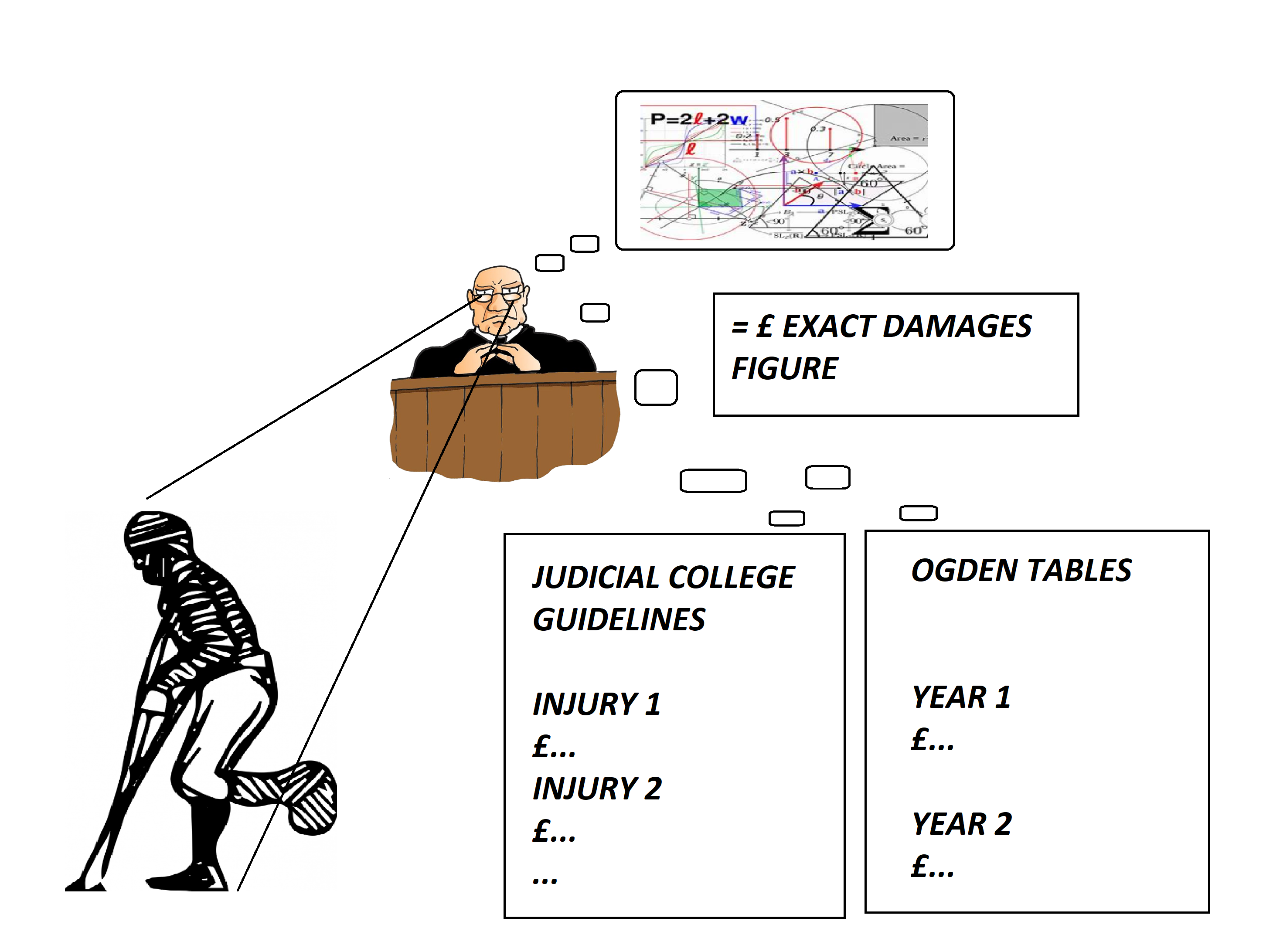Wells v Wells, [1999] 1 AC 345, [1998] UKHL 27
Citation:Wells v Wells, [1999] 1 AC 345, [1998] UKHL 27
Rule of thumb:How are personal injury damages to be calculated? The Court in this case affirmed that when calculating personal injury damages (a) the correct part of the Judicial College Guidelines has to be found, and (b) the exact right bracket of the part also has to be found, and this is how the basic figure for solatium is calculated. Where someone has suffered a severe/catastrophic injury then official actuarial tables have to be used and these have to be followed to calculate future wage loss & premature loss of life, with it only being in exception cases that they would not be followed.

Ratio-decidendi:
‘There is no purpose in the courts making as accurate a prediction as they can of the plaintiff’s future needs if the resulting sum is arbitrarily reduced for no better reason than that the prediction might be wrong. A prediction remains a prediction... The whole point of agreeing a life expectancy if it can be done, is to exclude any further speculation. There may well be special factors in particular cases. But the [actuarial] tables should now be regarded as the starting point, rather than a check. A judge should be slow to depart from the relevant actuarial multiplier’, Lord Lloyd at 378-379.
‘that the case falls at the upper end of the moderately severe brain-damage bracket as described in the Judicial Studies Board Guidelines 2nd ed. (1994) (£77,500 to £95,000), and not within the most severe brain-damage bracket (£105,000 to £125,000)… There are before the House appeals in three actions for personal injuries, all raising the same question, namely, the correct method of calculating lump sum damages for the loss of future earnings and the cost of future care. Negligence was admitted in all three cases… In Wells v. Wells the plaintiff, a part-time nurse, aged nearly 58, was very severely injured in a traffic accident when she was travelling as a passenger in a car driven by her husband. She suffered serious brain damage. As a consequence she is no longer capable of working, or caring for herself or her family. She will require care for the rest of her life. The judge, His Honour Judge Wilcox, awarded her £120,000 for pain and suffering. The total award, including loss of future earnings and cost of future care on a life expectancy of 15 years, came to £1,619,332. The Court of Appeal reduced the figure for pain and suffering to £100,000 and substituted a life expectancy of 10 years 3 months. They arrived at a total of £1,086,959. The main reason for the sharp reduction was that the Court of Appeal took a discount rate of 4.5 per cent. in calculating the lump sum for future loss, whereas the judge had taken 2.5 per cent’, Lord Lloyd of Berwick at 2-3.
Warning: This is not professional legal advice. This is not professional legal education advice. Please obtain professional guidance before embarking on any legal course of action. This is just an interpretation of a Judgment by persons of legal insight & varying levels of legal specialism, experience & expertise. Please read the Judgment yourself and form your own interpretation of it with professional assistance.

